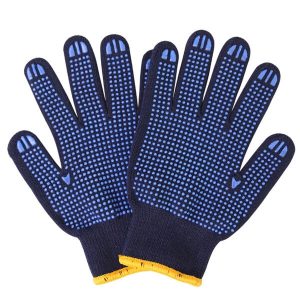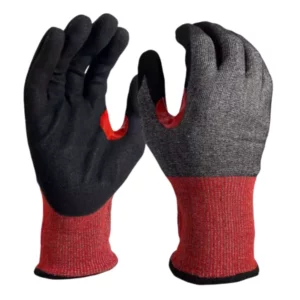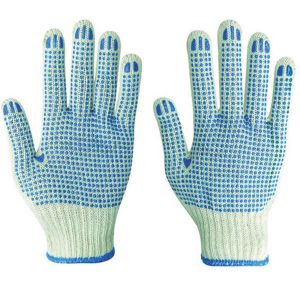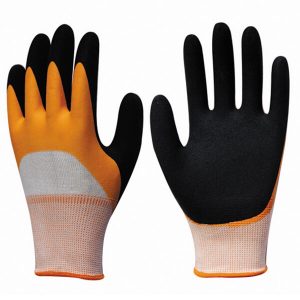Impact-resistance gloves are an important tool for hand protection. Because the hands are the parts of the body most susceptible to injuries in industries that require using your hands for all the things that need to be done such as in the oil, manufacturing, automotive, construction and production industries. Today, there are impact-resistance gloves that protect the hands from said injuries and they are governed by the ANSI/ISEA 138 Impact Standard. Learn more about this standard below.
Why You Need Impact Protection?

In 2019 alone, more than 143,000 people were hospitalized due to hand injuries. Crushed and cut-related injuries account for 76% of these injuries.
Since the hands are often in the way when it comes to performing tasks in these industries, they become more susceptible to injuries. The back of the hands, particularly, has delicate bones that could be crushed beyond healing when accidents strike.
In the oil and gas industries, for instance, injuries can happen when workers handle heavy materials such as pipes and hoses. Studies find that it is not often wielding heavy tools like a sledgehammer that leads to injuries but the repetitive handling of smaller but no less dangerous materials like this. The repetitive tasks can inflict damage to the hands.
Injuries can happen in between work when there is a lot of motion. It also happens during clearing projects when workers are tasked to remove construction or rig site materials. It is also not unheard of for accidents like materials breaking free from being tethered to lines and falling on hapless workers.
Do you know the importance of impact-resistance gloves?
Providing impact protection to workers offers a myriad of benefits beyond safety including the following:
- Prevention of downtime for industries.
Operations tend to halt when workers are injured due to hand accidents. This can lead to business downtime, which can result in lost revenues.
- Businesses can become susceptible to liabilities.
When workers are not compensated well for their injuries, especially if it leads to disabilities or long-term pain, this can lead to expensive litigation.
- It creates a good relationship between workers and employers.
Providing impact protection assures workers that they are being taken care of by their company.
So safety starts with hand protection, please wear impact-resistance gloves.
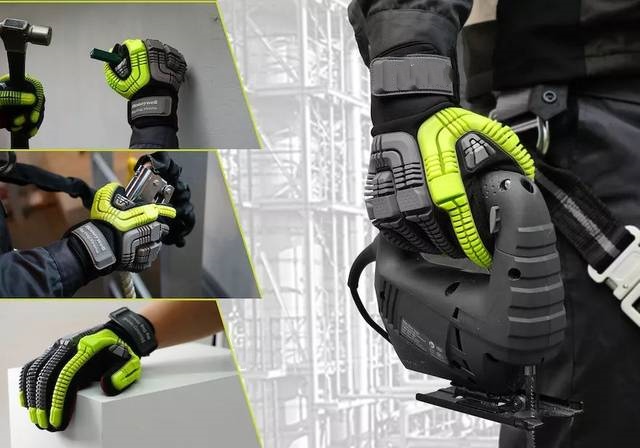
The New ANSI/ISEA 138 Impact Standard – What You Need to Know
In the past, there was insufficient protection for workers when it came to impact. While the existing ANSI/ISEA 105: 2016 American National Standard back then protects workers from injuries like cuts, abrasions, punctures and tears, the standard does not include protection from impact.
This is where the new standard comes in – the ANSI/ISEA 138 Impact Standard that was launched earlier in 2019. The new standard includes impact protection. It helps industries find the right level of protection for the tasks that need to be done.
To make the new standard, a subgroup has been organized. The top 7 glove manufacturers all over the globe contributed to it along with a physician with a specialty in doing reconstructive surgery for hand injuries.
The new standard follows four simple mandates:
- Using a specific testing method agreed upon by the subgroup will determine impact protection.
- Definition of performance levels of gloves
- Includes a pictogram mark for the impact-resistance gloves
- Gloves have to undergo laboratory testing and need to obtain a certificate of accreditation. It should meet the requirements set by the ISO/IEC 17025:2017.
The impact-resistance gloves undergo a rigorous testing process based on the standards set. That includes setting what equipment and methods to use. Samples may be initially tested to check the condition of the gloves and then improvements made when the samples do not meet the quality standards, especially in the fingers, knuckles and thumb areas.
How Impact-resistance Gloves are Evaluated Based on the New Standard
Using the ANSI/ISEA 138, the gloves then follow a strict testing process to make sure they are compliant. First, they are checked based on how well they dissipate and distribute impact force, especially on the finger and knuckle areas. Their level of impact distribution and dissipation will be rated using a scale of 1-3, with level 3 offering the highest level of impact protection and level 1 offering the least amount of impact protection. The higher the level, the higher the protection it provides, which means wearers are less likely to experience injuries while using the gloves.
It is also interesting to note that the standard rates the impact-resistance gloves based on their lowest level of protection. That is because gloves can be rated differently in different areas. For instance, the impact-resistance gloves have a level 2 protection around the knuckles but may have a level one in the thumb and fingers, then it is still considered a level 1 glove. This encourages manufacturers to think about all-around protection.
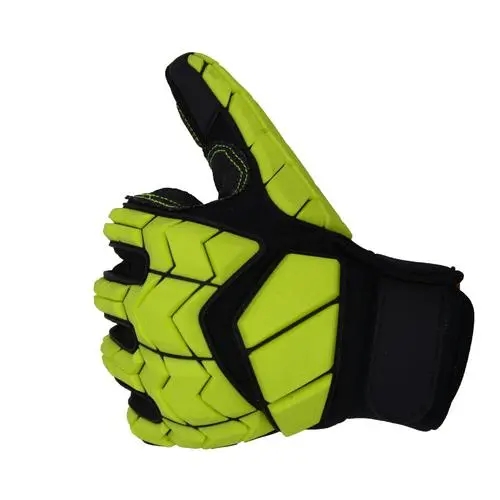
When it comes to testing the gloves, they are usually evaluated based on two key areas:
- Fingers and thumbs
Since the fingers and the thumbs tend to often get injured, they are the ones that need the most impact protection. When they are assessed, they are tested while there are two distances measured at the fingertips.
- Knuckles
To determine how much protection the knuckles provide, testers have to wear the glob and then the knuckles are located while the wearer is holding a tube. This determines whether the gloves can sufficiently cover the knuckles. If not, its protection could be compromised.
Impact-resistance glove Protection Methodology
A 2.5kg mass with 5J of impact will then be dropped onto the impact-resistance gloves. The first will be directed on the fingers and the next will be on the knuckles. If the mean transmitted force is less than or equal to 9N, it is performance level 1, if the transmitted force is less than or equal to 6.5 KN, it is level 2 and if it is less than or equal to 4 KN, it is performance level 3.
Conclusion
The best way to determine what level of impact protection you need is to understand what kinds of tasks your industry does and what possible injuries your workers are subjected to. The heavier tools they are in charge of, the higher their need for impact protection is.
To learn more click here!!!

